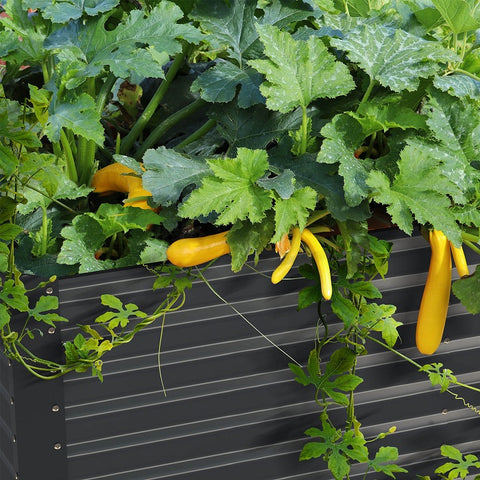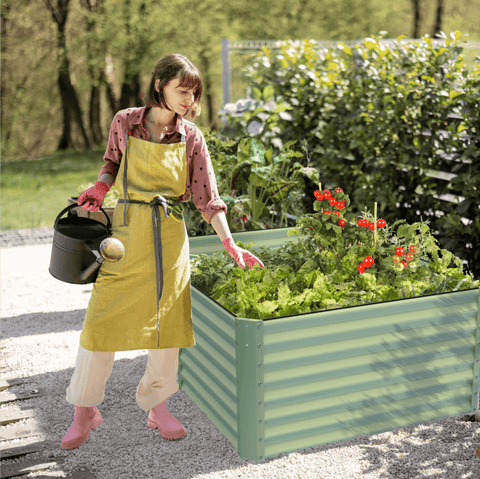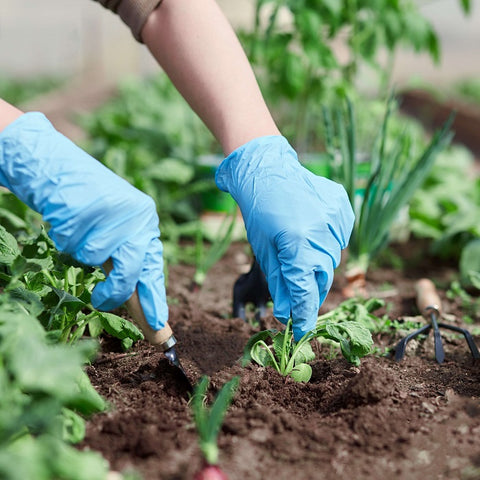As we grow vegetables at home, we can't use chemical pesticides, so we basically have to rely on some local methods to make some green insecticides to prevent and control insects and diseases in our vegetables.The following content also has some reference value for raised garden beds.
When sharing some ingredients or plants that can be used for pesticide, such as hot pepper, garlic, ginger, pyrethrum, etc., vegetable friends are often confused about why these plants have the function of killing insects and preventing insects, and why when I plant these vegetables or plants, they will also give birth to insects and be bitten by insects.
Here's why, and how to figure out which plants in our lives can be used as soil pesticides.
 Why do deworming plants get insects?
Why do deworming plants get insects?
Generally deworming or can do soil pesticide plants have "toxicity", of course, most of us basic no harm, just for some pests. Poisonous plants generally show toxicity at the maturity stage, and in the seedling stage, the basic toxicity is much or no toxicity.
Therefore, when we collect some plants to make homemade soil pesticides, we must wait until the plants are just mature. If the plants are not mature, the toxicity is not strong and the effect is not good. If it is collected too late, the plants have withered and lost their virulence, and the insecticidal effect is not good.
That's why using the same ingredients or plants as soil pesticides, some are very effective and some are less effective.
The principle of killing insects by poisonous plants
Now the Spring Festival is coming, most of the vegetable friends may go back to their hometown, in fact, a lot of weeds or wild plants in our hometown have very good insecticidal effect, if you can judge which plants can be used as soil pesticides, collect some, the dishes will not worry about.
Generally, soil pesticides can be divided into two categories from the nature of plant control and mineral, among which the number of plant varieties is the largest. Such as azedarach, pyrethrin, pepper, wild mint, prickly ash, wild schizonepeta and so on belong to the plant. Such as soap, lime and sulfur are minerals.
According to the types and development of plant medicaments used in various regions, except for some plants, most inedible plants contain some special vegetative bases, volatile oils, resins, bitter substances, octinous substances and other components. These substances have different degrees of toxic effects on some crop diseases and insects, such as stomach poison, touch, fumigation or sterilization. Therefore, it can achieve certain prevention and control effect.

How can you tell if a plant is poisonous?
General plants can kill insects and sterilization, mainly to see whether the plant contains toxic ingredients, we can judge by the following three methods.
- Observe the pulp density of plants: break the collected plants with your hand or knife, and then observe whether the plant body contains pulp juice. If the slurry is very thick and corrosive to the skin, it can be judged that the plant can be used as soil pesticide.
2, there is no special smell, all can be used as soil pesticide plants, generally have odor, bitter, spicy and other unpleasant smell, if found plants have these abnormal smell, basically can try to produce soil pesticides.
- Observe small animals around the plant: when collecting, observe in detail whether there are spiders or ants around the plant and other small animal activities, to see whether the plant has been insect harm marks you, such as found that the plant is intact, no small animals, basic can also judge that the plant contains toxic components.

How to collect and preserve
General perennial herbs or woody plants, is to use its stem, leaves, flowers, fruit, we want to cut with a knife, do not uproot so as not to affect its reproduction next year, after all, we should be appropriate protection of the plant. Or you can pick it up whole and transplant it to our garden.
- Dry storage method: This method is more suitable for less water content of plants or some parts of it, such as walnut leaves, mountain tea, etc. Before storage, it is best to wash the collected plants or parts, dry or air them, and then pack them into bags and store them in a dry place, and then make them into soil pesticides when controlling diseases and pests.
- Cellar storage method: such as Wolf poison, mountain garlic, lotus and other plants with more water content, can be used cellar storage method, that is, wash and dry the plants first, put them into the cellar or clay pot, close the outlet, isolate the outside air. 10-15 days later, you can choose a dry sunny day, open the mouth, change the wet air in the cellar, so that within a few months, there will be no mildew phenomenon.









